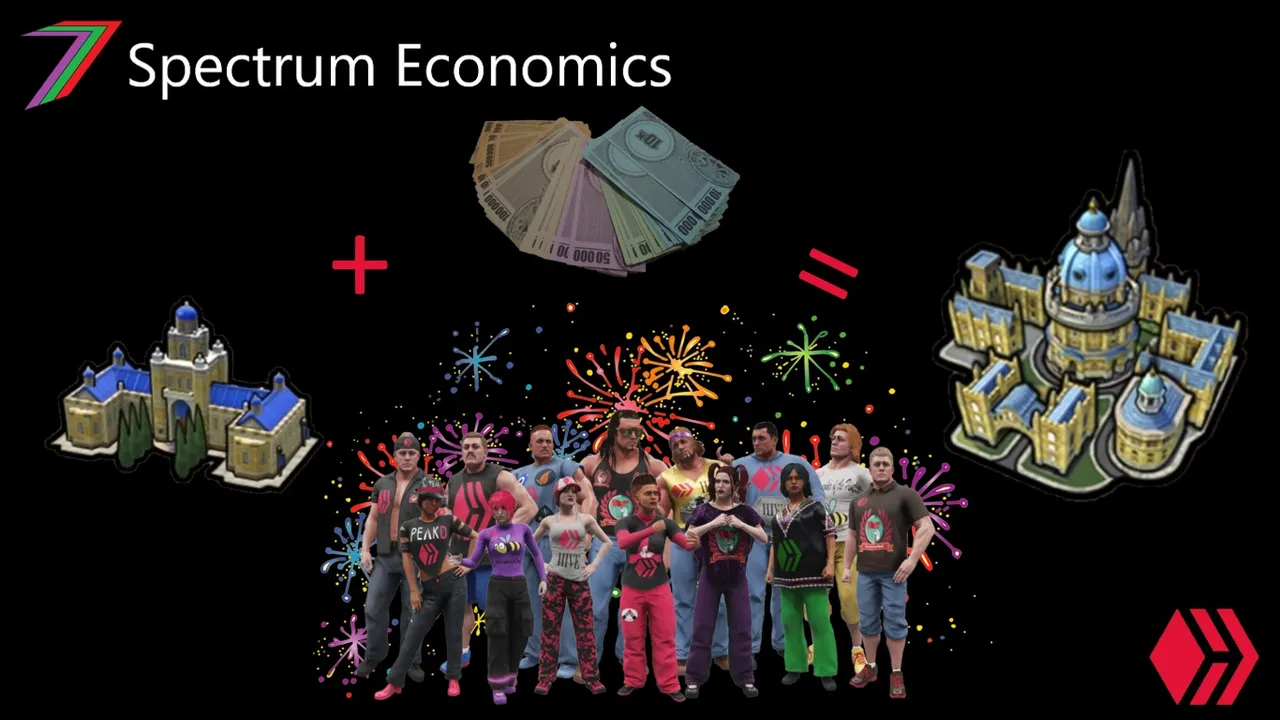Hi Everyone,
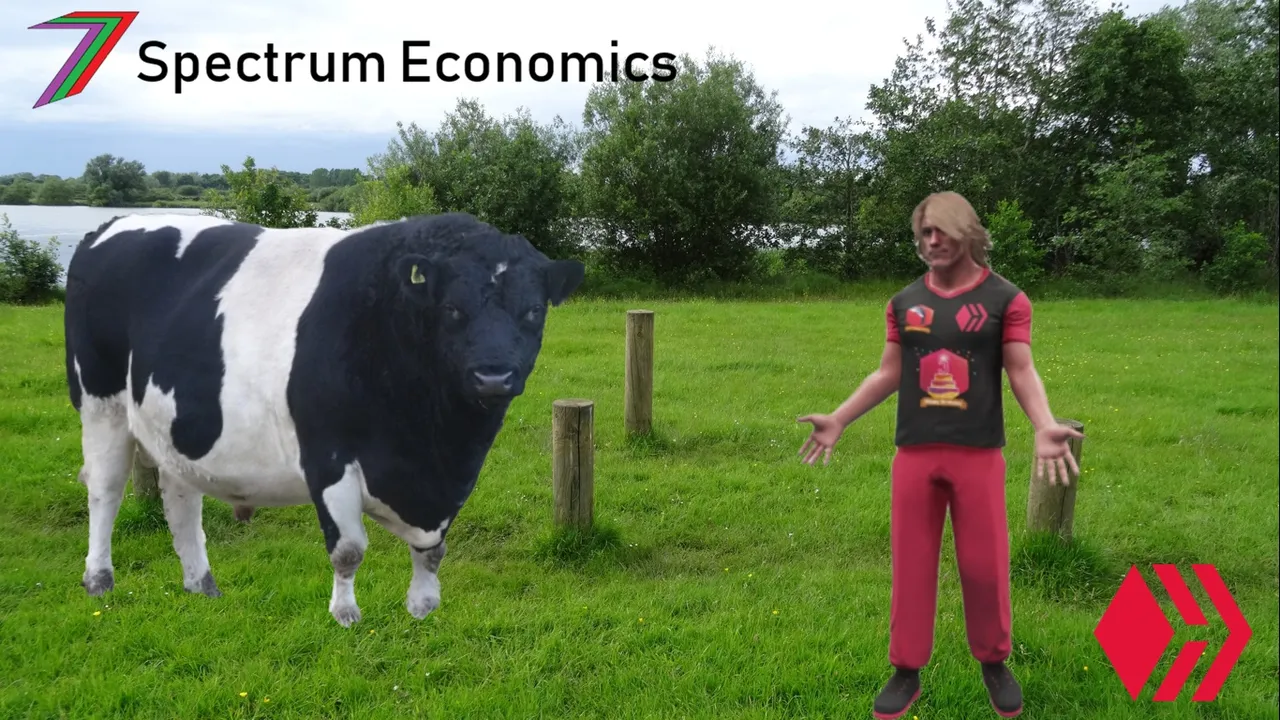
This is Part 3 of my valuing life series. I began this series in September 2018 but I only managed to complete the first 2 parts. I intended to complete this series a long time ago but I was not quite sure how to progress the series. Therefore, I took a break. Unfortunately, I became busy with other things and I forgot about the series. I only realised it was incomplete when I was looking over my posts in my collection series. I intend to compile several of my more significant posts into a book.
Recap of the series

In Part 1, I introduced the concept of valuing life. I discussed how it could be useful to place a value on life for the purpose of comparison. In cost benefit analysis, in order to evaluate and compare various projects and initiatives, values are assigned to human life. In Part 1, I explained how the value of life could be extended to animals.
In Part 2, I focused on explaining how the value of human life can be determined. I explained two typically used approaches. The first approach is the human capital approach; this approach considers the direct and indirect cost of a loss of life. This includes loss of future income, legal and prosecution costs, loss of labour in the household, ambulance costs, funeral costs. The second approach is the willingness-to-pay approach, this approach bases the value of life on what people are willing to pay to avoid death or reduce their chances of dying.
What is in Part 3?

In Part 3, I aim to determine the value of life of different animal species. I have previously attempted to determine the value of animal life in my two videos What is the real cost of meat? and Vegan Cost of a Big Mac (Includes Cruelty and Loss of Life). These videos focused on determining the value of animal life to demonstrate the real cost that consuming meat is inflicting on the world. Since these videos, I have tweaked my approach to valuing the lives of animals. I have also changed how I apply my determined values of animal life. In my videos, I focused on the meat industry (i.e. real cost of a Big Mac). In this post, I am focusing on animals held in captivity. These animals could be on farms, in zoos, or pets at home. I am using the value of life to monetize the costs or benefits to animals held in captivity.
Valuing the life of an animal based on the value of human life

In this series, I am considering two approaches to valuing the life of animals. In this post, I attempt to value animal life using values from the willingness-to-pay approach described in Part 2. These values are adjusted for life expectancy and intelligence. Life expectancy seems like a logical adjustment as different animals have different life expectancies. If we hold all other factors constant, a longer life should be considered more valuable than a shorter life. Animals are not equal in terms of what they can experience or contribute to their species or the broader environment. Some species have important individual roles while others operate as a collective where each animal is almost identical to the next. I do not think there are any all-encompassing metrics that can be used to determine the value each animal contributes. I also believe that this value cannot be measured the same way across different species. I currently believe the most useful metric would be intelligence. Intelligence creates the potential to experience, contribute and add value.
How can we calculate the intelligence of animals?
It is very difficult to measure the intelligence of different animal species. Intelligence can be displayed in many different ways. There are also many different types of intelligence, which offers different value to different species. From my research, I have found that the Encephalization Quotient to be the most reliable measure of the intelligence of animals that can be applied across multiple species.
The Encephalization Quotient is used to calculate the intelligence of animals based on the size of the brain and body weight. This approach produces some inconsistencies with some animals scoring lower than what is observable from behaviour and cognitive ability. This is apparent in pigs. Pigs appear to have very high intelligence but do not have a high brain weight to body weight ratio like some smaller animals do. Even though the Encephalization Quotient may not present a true reflection of intelligence for all animals, it appears to be the most reliable and consistent approach to determining animal species intelligence. This approach is also reasonably simple to combine with value of statistical life. The equations below describe how the Cephalization Factor is calculated (first step in calculating the Encephalization Quotient).
Cephalization Factor = Brain Weight / Body WeightX
Where X is a number less than one. For this post, 0.66 is used; some literature recommends 0.56 and 0.28 for primates.
Encephalization Quotient = Cephalization Factor / Average Cephalization Factor of Mammals
The body weight is to the power of X (0.66), as research has established that there is not a linear relationship between intelligence and brain weight to body weight ratio. Table 1 contains the body weights, brain weights, Cephalization Factors, and Encephalization Quotients for several animals.
Table 1: Encephalization Quotient
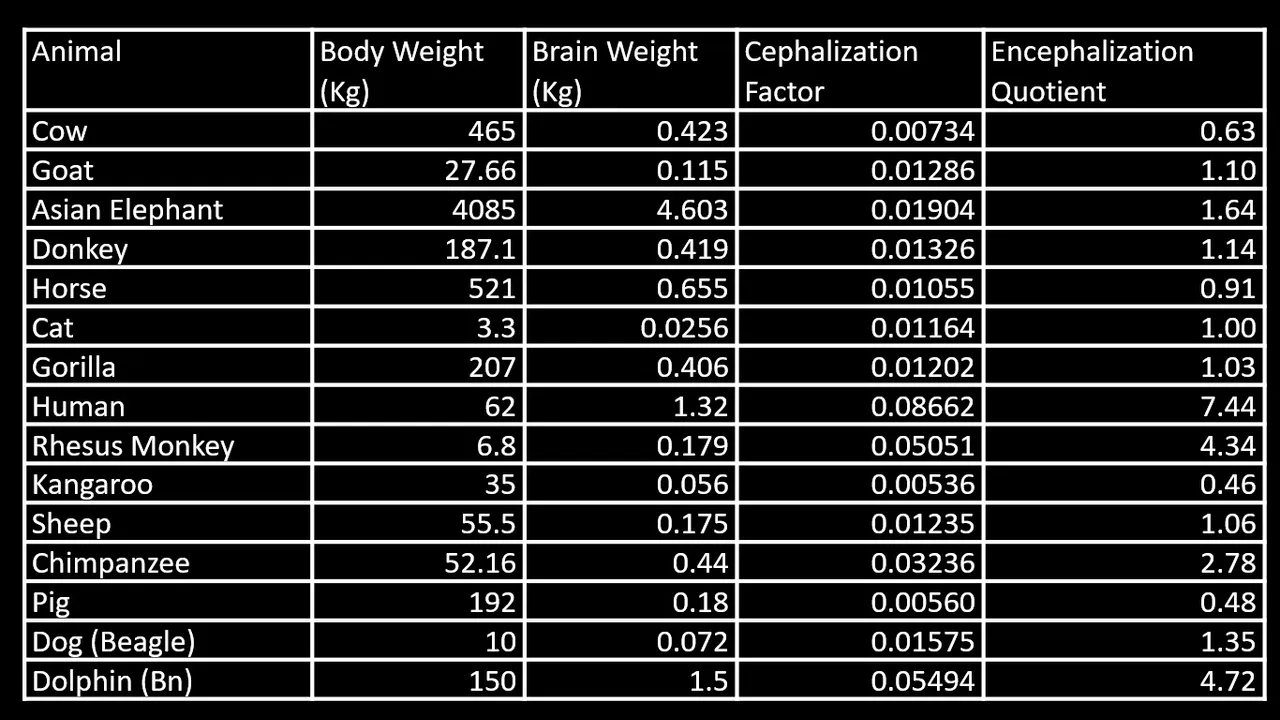
Source: Brain and body weight of animal species University of Illinois
The Encephalization Quotient for humans was used as the base for calculating the Encephalization Quotient. The Encephalization Quotient of 7.44 for humans is consistent with journals and experts in the field (Warrier Views).
The Cephalization Factor for humans was calculated using the data presented in Table 1 (1.32/62(0.66) = 0.08662). The human Cephalization Factor and the human Encephalization Quotient have been used to calculate the average Cephalization Factor for mammals, which has been used to calculate the Encephalization Quotients for the other mammals in Table 1. The formula used to calculate the Encephalization Quotients for the other mammals is as follows.
Average Cephalization Factor of Mammals =
Human Cephalization Factor / Human Encephalization Quotient
The Encephalization Quotients calculated in Table 1 are intended to be used as an input for determining the value of an animal’s life. These values are not precise; they will differ from values presented in other literature. I believe consistency is more important than accuracy when numbers are compared with each other.
Calculating Value of Statistical Life of Animals
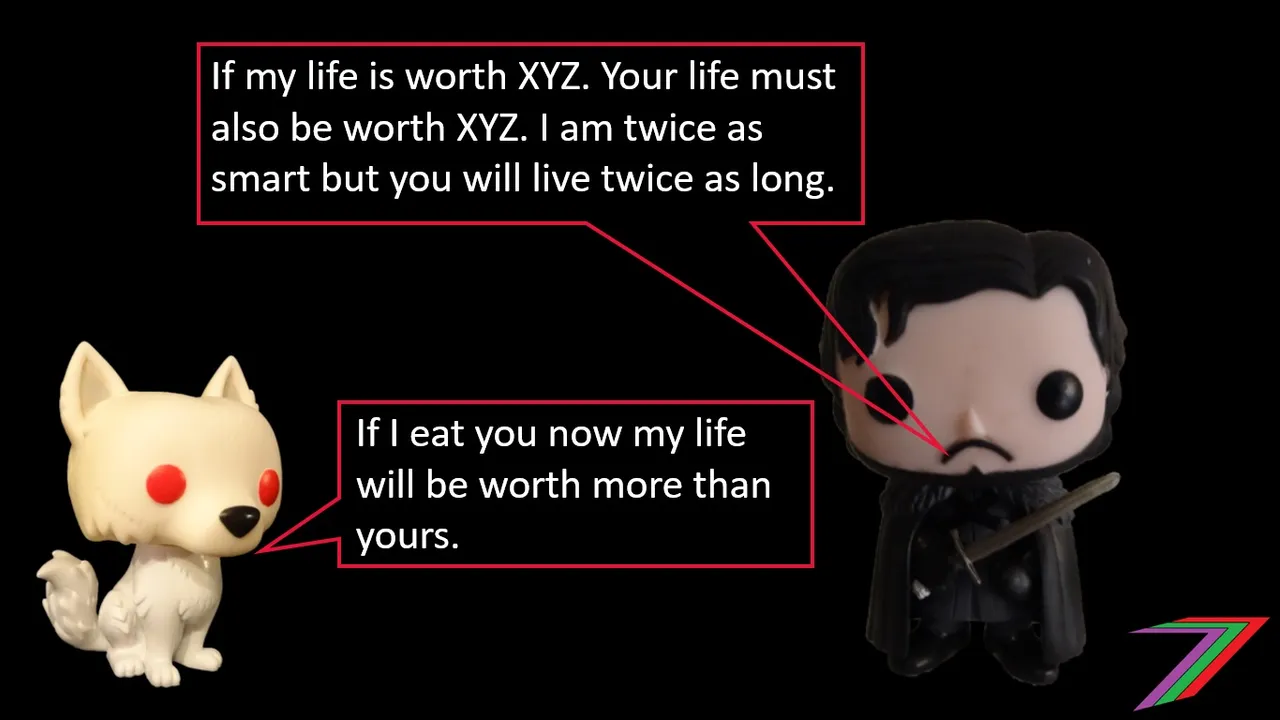
Now that the value of statistical life of humans, the Encephalization Quotient and life expectancy have been determined, we are able to calculate the value of statistical life of animals of various species using my approach. Below is my formula for calculating the value of statistical life of animals.
Value of Statistical Life = VSLH × LEA × EQA / (LEH × EQH)
Where:
VSLH is Value of Human Statistical Life
LEA is Life Expectancy Animal Species
EQA is Encephalization Quotient Animal Species
LEH is Life Expectancy Human (i.e. 79 years)
EQH is Encephalization Quotient Human
I have calculated three values for statistical life.
- Average value of statistical life
- Minimum value of statistical life
- Maximum value of statistical life
The average value uses a simple average of all values of statistical life presented in Part 2. The minimum uses the minimum value and the maximum uses the maximum value taken from the same post. This has been done to calculate a possible range of values for each species.
Table 2 contains the calculated statistical values of life for various animals species using the formulae described in this post.
Table 2: Value of Statistical Life of Animals
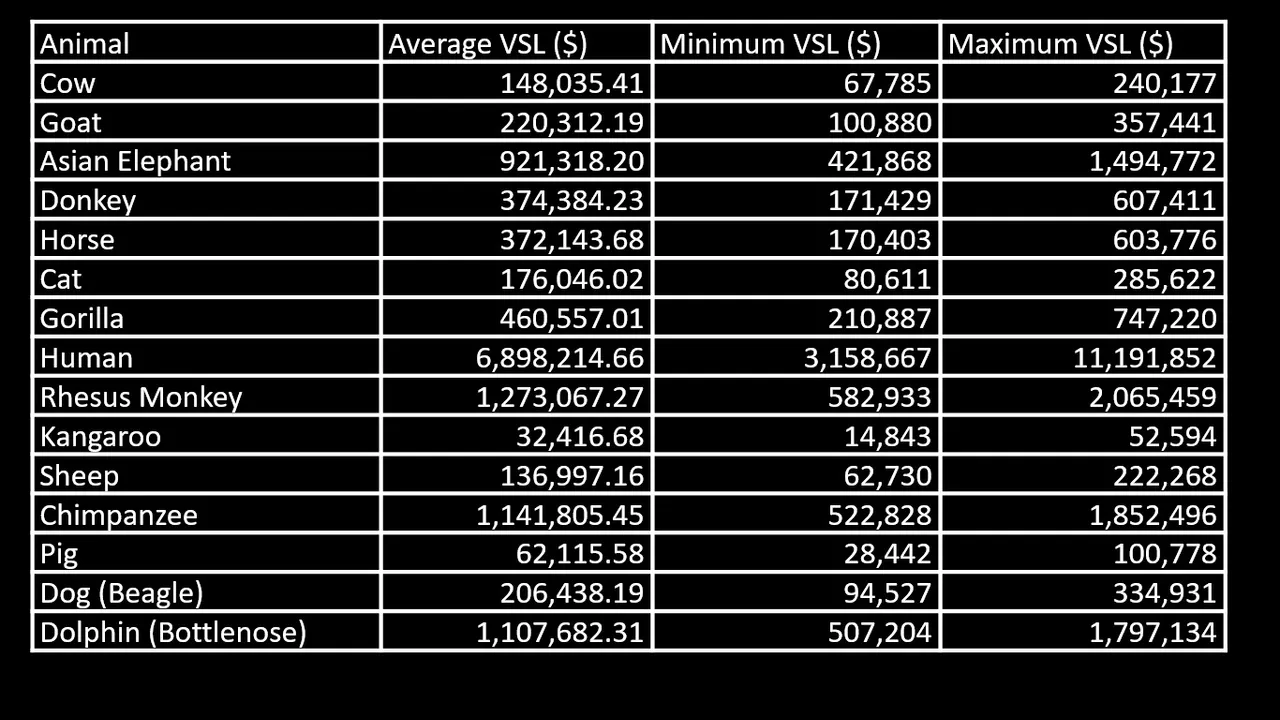
Note: See Part 2 for values of statistical life for humans.
The values of statistical life in Table 2 should be considered as an estimate of the intrinsic value each animal potentially offers to its own species. These values should be considered as an average across the life of the animal. These values do not include the exact age of death of each animal or the extrinsic value the animal adds to the environment. If the life of the animal was cut short, the value of life lost would be higher. For example, the average value of statistical life of a cow expected to live until 20 is $148,035. If we assume that the average age of a cow living in the wild is 10 years (20/2); we can assume that the value of $148,035 represents the value equivalent to 10 years of a cow’s life. If cow’s are slaughter at 1 ½ years, the loss of life needs to represent 18 ½ years rather than 10 years. Therefore, the value of life lost for a slaughtered cow would be $273,866 ($148,035 × 18.5/10), instead of $148,035. The value of life lost should be calculated in a similar manner for other animals whose lives have been cut short.
Quality of Life

So far, in this post, I have estimated the value of life of animals of different species based on valuations of human life, which also assumes a natural life. However, the majority of species of animals do not live a natural life. According to a study conducted in 2018 by the Proceedings of the National Academy of Sciences of the United States of America reported by Live Kindly, a large percentage of animals are held in captivity by humans. Approximately 60% of mammals are livestock, 36% are humans, and only 4% are wild. Approximately 70% of birds are poultry and 30% are wild. The quality of life in captivity is different from living in the wild. Life expectancy could capture part of the difference in quality of life.
We can conclude that animals kept in captivity for industries such as dairy and meat are worse off from being kept in captivity. Is this the case for animals kept in zoos within enclosures? Zoo animals are provided with plenty of food, are kept safe from predators, and are provided with medical care when needed. None of the above is guaranteed in the wild. Therefore, living in captivity should be an improvement over living in the wild.
According to Tidiere et al 2016, more than 80% of animals live longer lives in captivity than they do in the wild. Tidiere also found that smaller mammals receive the largest extension of life from captivity. Smaller animals are more likely to fall to calamity than larger mammals. Nature’s solution to the shorter life expectancy is greater propagation, shorter gestation periods, and younger age for sexual maturity.
Many larger mammals do not experience a longer average life expectancy when kept in captivity. Whales, dolphins, elephants, and horses have shorter life expectancies according to several sources. Table 3 contains the life expectancy of animals living in the wild or kept in captivity.
Table 3: Life Expectancy of Animals (Wild vs. Captivity)
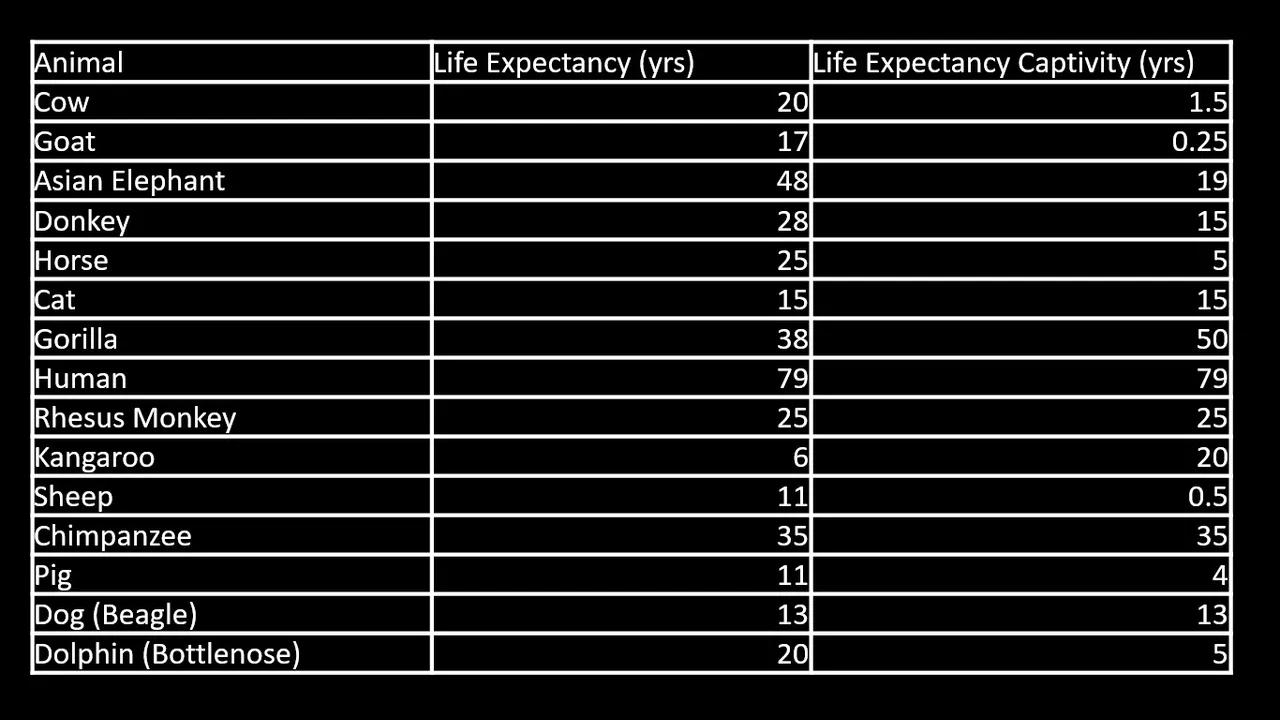
Source: Various sources
Of the animals considered in this post, we can see that only Gorillas and Kangaroos have increased life expectancy from captivity. The other animals have lower or the same life expectancy than they would have in the wild. We can use the information in Tables 2 and 3 to determine a monetary cost or benefit to groups of animals that are held in captivity.
Cost/Benefit of Captivity = VSLA × (LEAC - LEA) / (LEA / 2)
Where:
VSLA is Value of Animal Statistical Life
LEA is Life Expectancy Animal Species
LEAC is Life Expectancy Animal Species in captivity
If the value is positive, it indicates captivity has increased the quality of life of the animal. If the value is negative, it indicates captivity has decreased the quality of life of the animal. Table 4 contains monetised costs and benefits of captivity to each animal.
Table 4: Monetised Costs and Benefits of Captivity
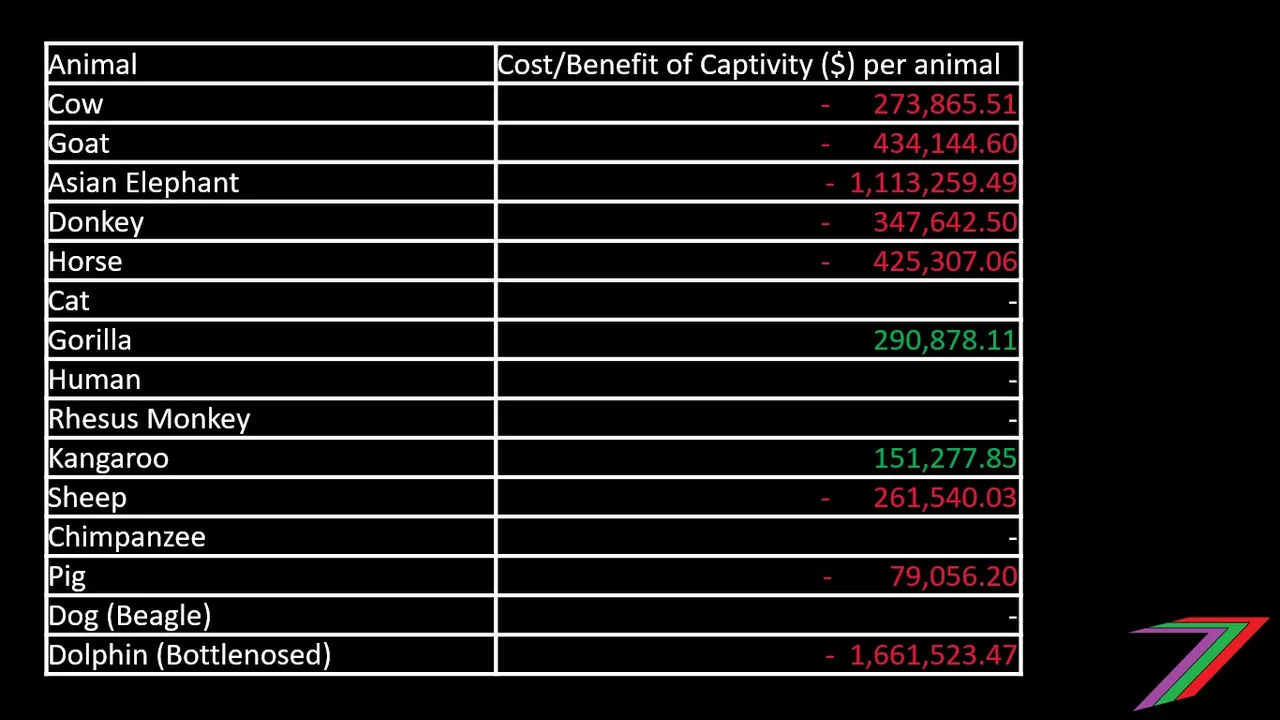
Note: The above costs and benefits do not include costs of animal upkeep and wellbeing nor the benefits to humans of viewing or engaging with them.
Some Advantages of Captivity

Zoos have argued that captivity can help prevent the extinction of endangered species. San Diego has reported a number of success stories in regards to restoring populations of animals. As at July 2007, the success stories include the following:
- Birth of 125 Cheetahs since 1970.
- Birth of 91 Southern White Rhinos, 10 Black Rhinos, and 50 Indian Rhinos.
- Birth of 128 Przewalski’s horses (only true wild species of horse in the world) to be reintroduced into their natural habitat.
- Birth of 300 Arabian Oryx. Some of them have been released into the wild in Tunisia and Saudi Arabia.
- Helped grow the California Condor species of bird from 27 birds in 1987 to 305 as of June 2007; 140 of these birds are in the wild.
- The zoo has captive breeding or management programs in other parts of the world. For example with Russia to preserve the Saiga (looks like an antelope).
Source: The San Diego Union Tribune
Holding animals in captivity can help prevent their species from becoming extinct as well as help restore their populations. However, human behaviour often pushes species of animals living in the wild to extinction. Behaviours such as hunting, fishing, deforestation, and activities that cause pollution threaten animal populations. Therefore, the benefits of keeping animals in captivity mostly relate to undoing damage caused by humans.
Conclusions
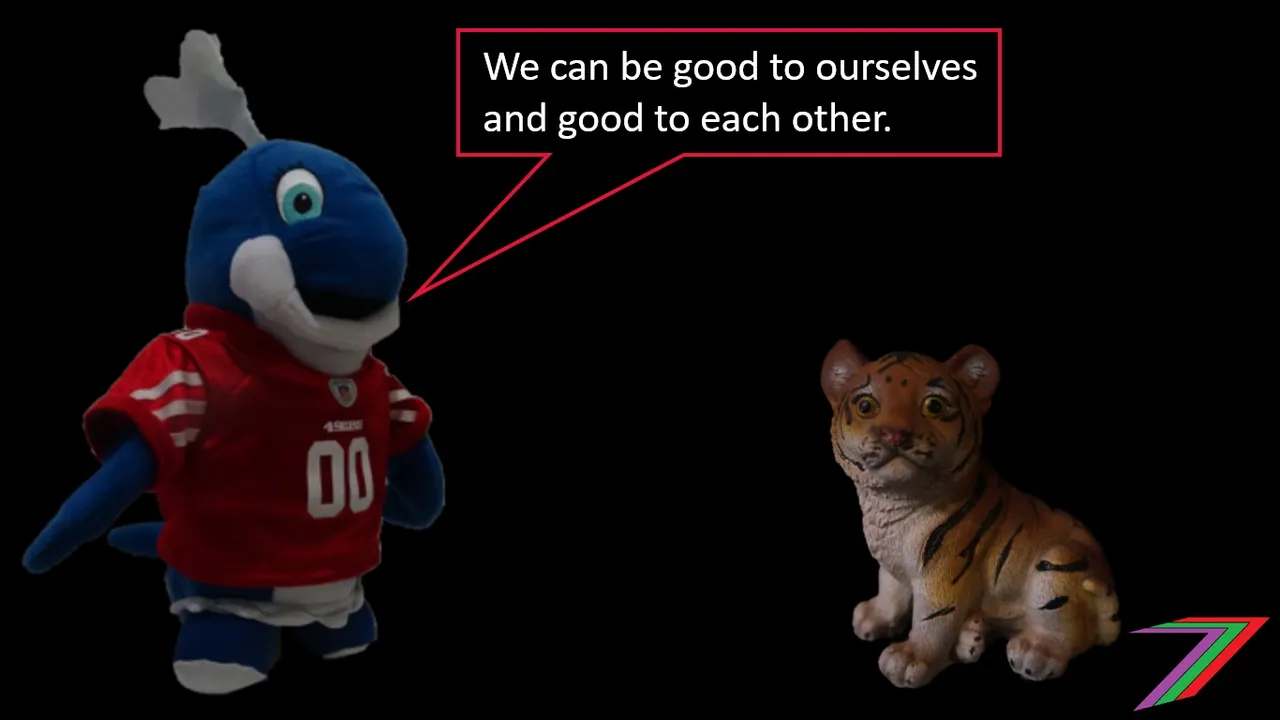
Applying a value to life is far from an exact science. This was demonstrated in Part 2 of the series where I presented a wide range of possible values for life for humans. The approach becomes even more inexact when applied to animals. Animals are unable to clearly state preferences or engage in activity to demonstrate the value they may place on their life. Therefore, to attempt to derive values of statistical life to several species of animals, I have applied the values of statistical life for humans and adjusted for life expectancy and intelligence. This created a range of values for different species of animals.
In the second part of this post, I considered quality of life of animals. To do this I compared life expectancy in the wild to life expectancy in captivity. Farm animals have a considerably shorter life expectancy than they would have if they were living in the wild. Animals kept in zoos often have longer life expectancies but this does not occur for all animal species. Smaller mammals tend to live longer in captivity, as they do not need to contend with predators. Larger mammals such as elephants, dolphins and whales do not thrive in captivity and experience lower life expectancy. Being away from their natural habitat is causing them harm.
The values calculated in the first part of the post were used to determine the cost or benefit of keeping certain species in captivity. The cost was calculated to be highest for large and intelligent mammals such as the Asian Elephant and Bottlenose Dolphin. Costs were also high for farm animals such as horses, goats, donkeys, and cows. Gorillas and kangaroos appeared to benefit from captivity.
The approach of valuing animal life using statistical life for humans only measures the life of the animal in respect to the value they offer their own species. This is an incomplete approach to valuing life, as the broader context of the environment they live in and interact with is not considered. The presence of a particular group of animals could be essential to the ecosystem. If these animals dwindle in number, it could be catastrophic to the whole ecosystem. Likewise, if a species has grown too large in number, it could be beneficial to the broader environment if they decreased in number. In Part 4 of this series, I will discuss how the value of life can be approached from an ecosystem perspective.
More posts
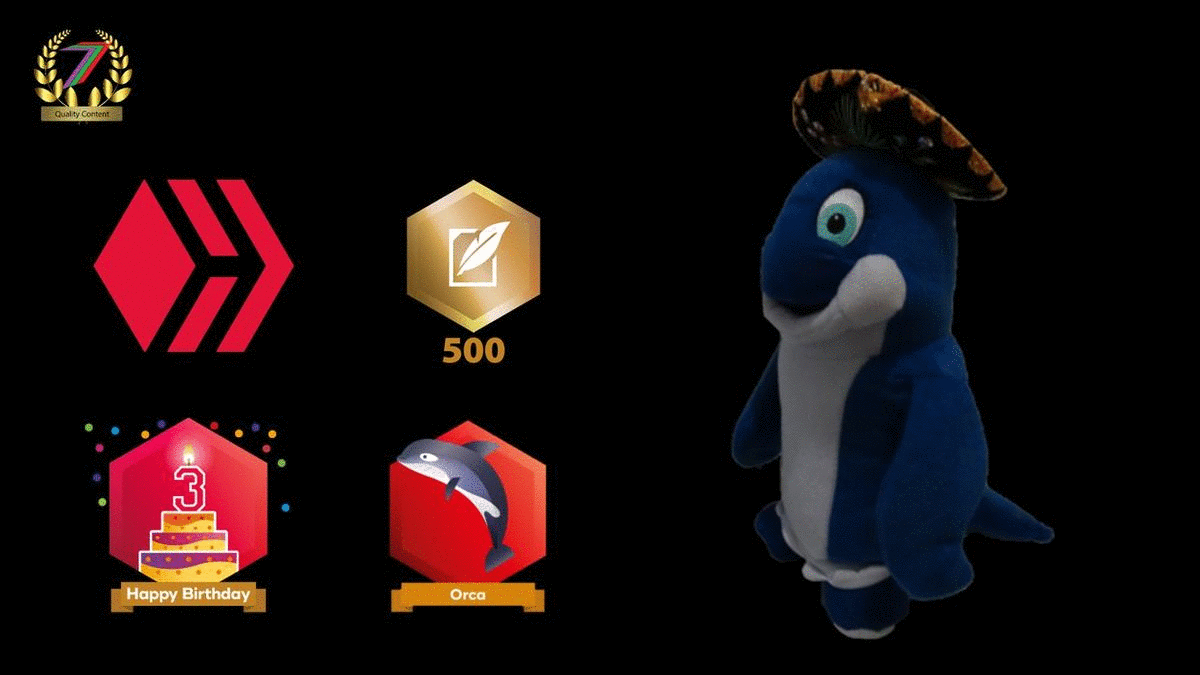
If you want to read any of my other posts, you can click on the links below. These links will lead you to posts containing my collection of works. These 'Collection of Works' posts have been updated to contain links to the Hive versions of my posts.
My New CBA Udemy Course
The course contains over 10 hours of video, over 60 downloadable resources, over 40 multiple-choice questions, 2 sample case studies, 1 practice CBA, life time access and a certificate on completion. The course is priced at the Tier 1 price of £20. I believe it is frequently available at half-price.
Future of Social Media






